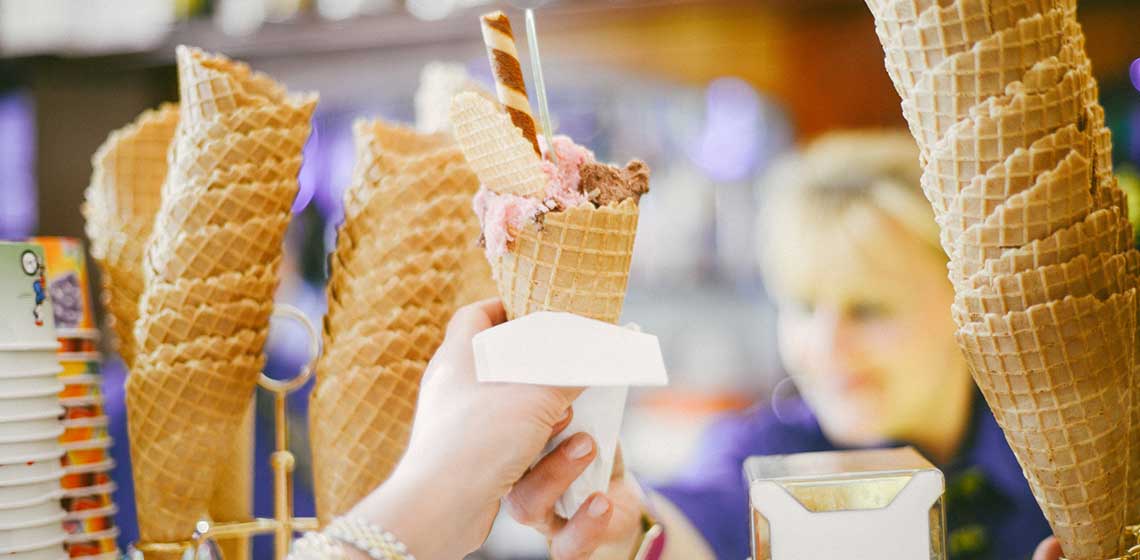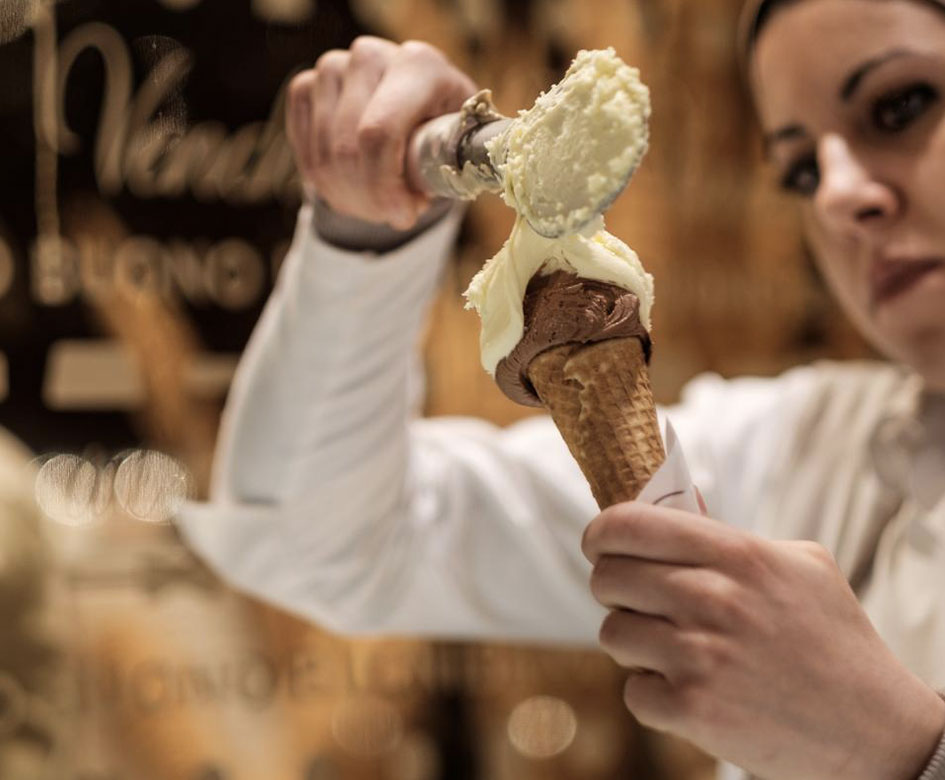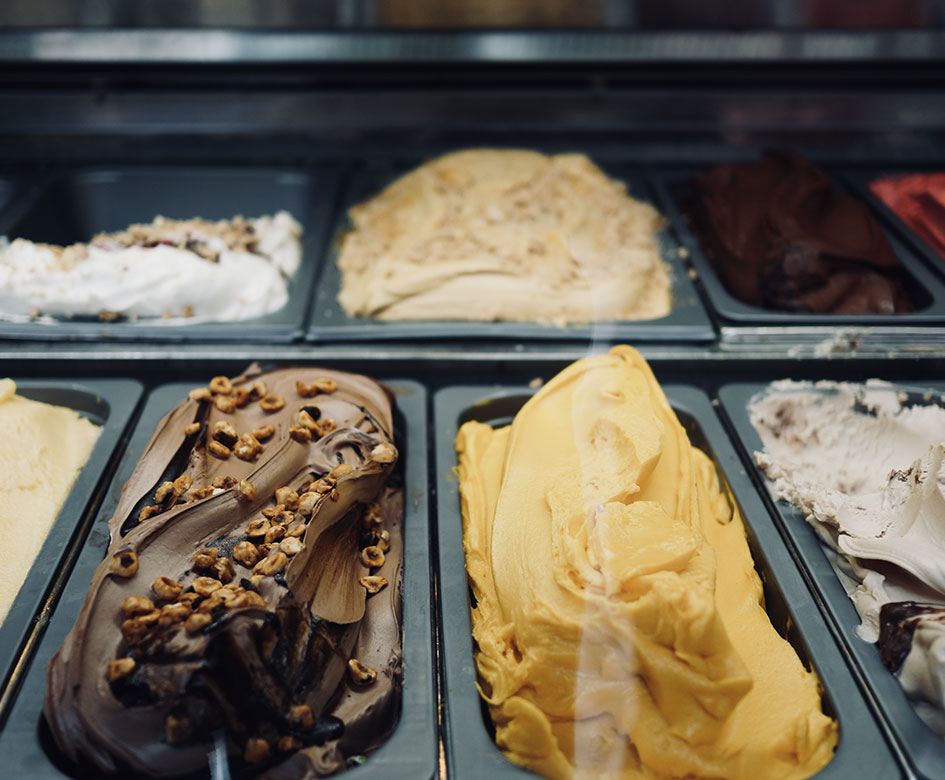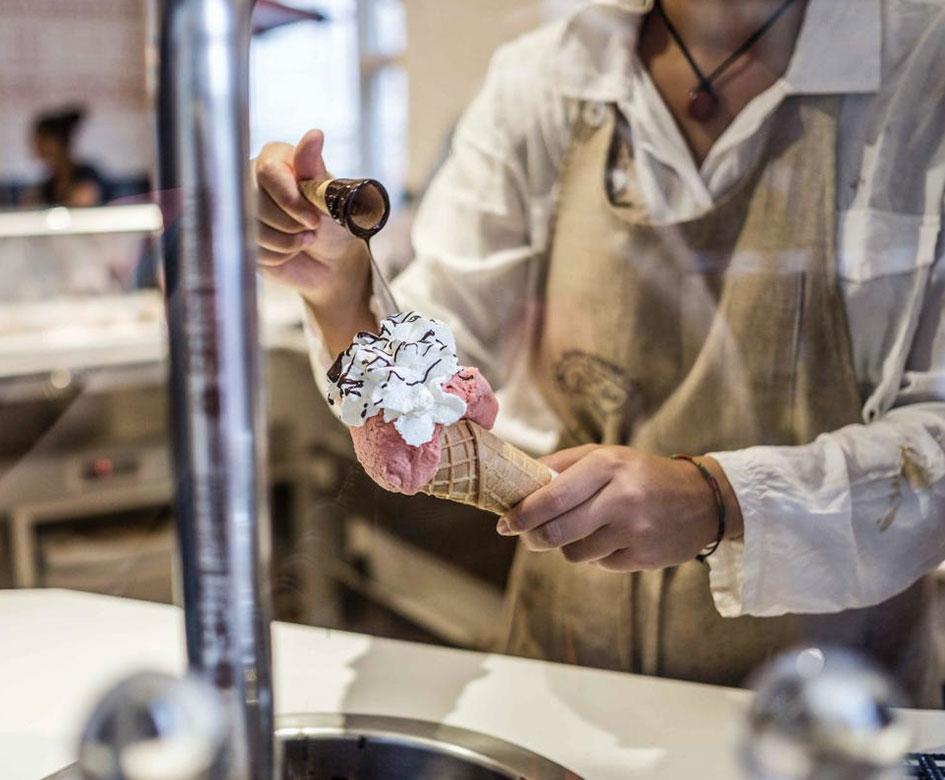
Gelato in Florence: a long history
Gelato: A history of the world's favorite dessert and traditionally authentic gelaterias in Florence.
The sweetest treat there ever was is surely a favorite in Florence; folks worldwide flock to the Renaissance city for its pristine art, outstanding architecture and above all, the lip-smacking gelato. And unbeknownst to many, this delicious dessert is said to have originated in Florence, making the city one of the best in the world for savoring the tasty treat.

History
Tracing the first gelato is quite a feat: records of frozen desserts similar to today’s gelato date as far as 12,000 years ago in ancient Mesopotamia.
The history of the treat has been tracked to ancient Chinese and Arab cultures; in fact, the word sorbet derives from the Arabic word scherbet, meaning ‘sweet snow.’
Yet besides its age-old origins, the gelato we love today only dates to the Italian Renaissance: alchemist Cosimo Ruggieri (d. 1615) is credited for having created the first-ever gelato (fior di latte) at the court of Catherine de’ Medici, or so the story goes.
Other sources credit mannerist architect Bernardo Buontalenti for the invention of gelato alla crema, the popular egg cream flavor whose recipe (crema Buontalenti) was supposedly circulating since 1565.
And the beloved dessert became an international sensation when Sicilian Francesco Procopio Cutò made his way to Paris with a gelato-making machine in 1686. Regardless of its official birthdate, the modern version of the frozen treat has Florence to thank for its launch.

Gelato versus ice cream
“What’s the difference?” is probably one of the most-asked questions by tourists in Florence.
Although gelato is simply the Italian word for ice cream, the two frozen desserts do technically bare a few differences.
Compared to the classic American-style ice cream, gelato differs from ice cream in four main areas: fat, sugar, air content and temperature.
Gelato uses more milk than cream and thus lower quantities of fat (law requirements state that gelato must have at least 3.5% butterfat while American ice cream often contains about 10%).
Gelato is also churned at a much slower speed than ice cream, which introduces less air into the base and creates a dense, flavor-packed consistency. Moreover, while many American ice creams are sweetened with artificial sweeteners, the natural sugar used in gelato allows for the creation of smaller ice crystals, adding to its smooth and creamy texture.
The differences are slight and differ between ice-cream makers, though gelato is usually stored at warmer temperatures to guarantee a softer consistency. Yes, the two are technically the same dessert, but it’s the little things that make a world of difference. And so the question remains: what goes into making a traditionally authentic gelato?
It’s simple: milk, cream, sugar and a little flavor, if desired.
Gelato in Florence
Enough backstory, its time to eat!
Around Florence, the gelato options are plenty, but be wary of sky-high piles of brightly-colored gelati: there are loads of places serving ice cream around Florence, but not everyone follows traditional recipes.
For one of the best spots in town, head south of the river to Gelateria La Carraia (piazza Nazario Sauro, 25/r), where you’ll find flavor-packed gelato with a creamy texture.
This famous gelateria is renowned for its light and fluffy consistency, and you’ll be sure the gelato is made following the centuries-old recipe – no modern tricks involved.
Carapina (piazza Guglielmo Oberdan, 2r), another favorite that follows traditional gelato-making methods, has introduced noteworthy new flavors throughout the years, such as one made of milk, cream and peppermint.
Head to
Gelateria dei Neri (via dei Neri, 9) for another hub with a wide selection of delicious flavors whipped up in a dense and creamy gelato: here, you can try the likes of pistachio and caramel mixed with unusual flavors like black sesame and ricotta and fig.
Gelateria dei Neri (via dei Neri, 9) for another hub with a wide selection of delicious flavors whipped up in a dense and creamy gelato: here, you can try the likes of pistachio and caramel mixed with unusual flavors like black sesame and ricotta and fig.
Don’t miss Gelateria Edoardo (piazza del Duomo, 45r) in the heart of Florence, known for its Bio gelato made using only natural products without added ingredients and preservatives.
And lastly, check out Perchè No! (via dei Tavolini, 19r), a gelateria around since 1939 boasting traditional recipes and the highest quality ingredients, such as ‘Slow Food’ Bronte pistachios, cardamom from Ixcán, Guatemala and vanilla from Madagascar.
The last three of these gelato shops also offer vegan options.
For an intense flavor and a creamy ice cream with an authentic taste, truly mouth-watering, try the two ice cream shops in the Oltrarno squares: Artisan Gelato - La Sorbetteria, in Piazza Torquato Tasso, 11r, and the Gelateria della Passera in Via Toscanella, 15 / red.
You won't regret it!

Credits photo header: Anne Marthe Widvey under Creative Commons.






 All the services are provided by local merchants
All the services are provided by local merchants By using this site you support Florence
By using this site you support Florence We offer products with high-quality standards
We offer products with high-quality standards You stay sustainable
You stay sustainable It's a 100% trustworthy website
It's a 100% trustworthy website